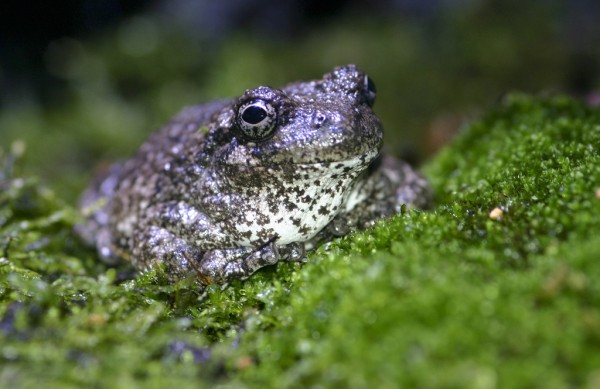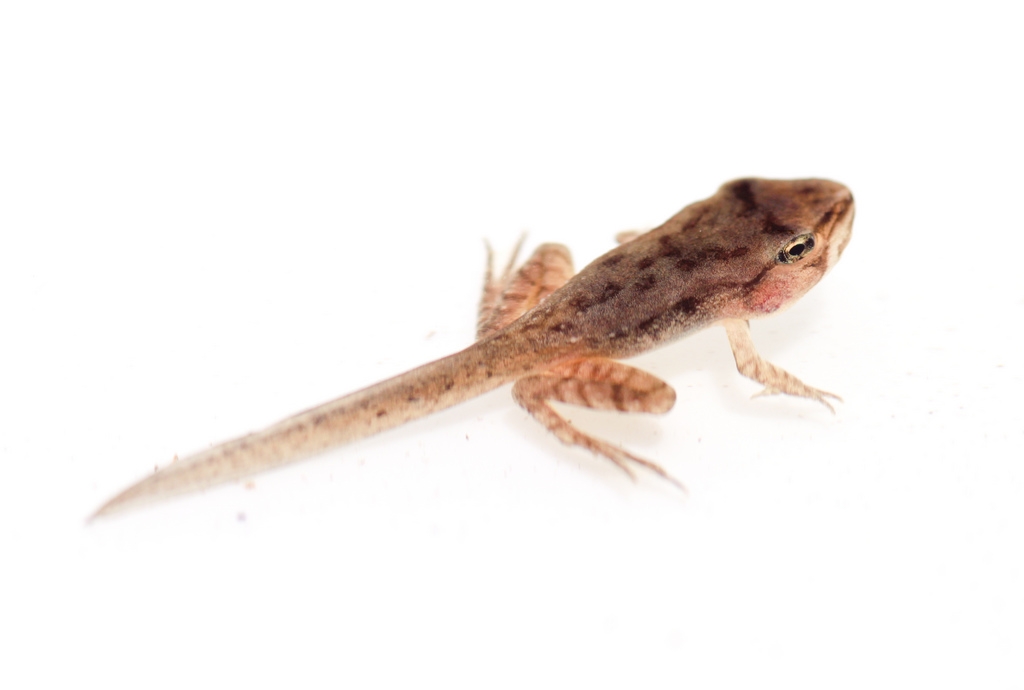
This colorful and shimmery frog could compete with any fireworks. (Photo by Brian Gratwicke, Smithsonian Conservation Biology Institute)
Frogs found within the United States of America can be red, white, and sometimes, in rare cases, blue. As their names suggest, the California red-legged frog (Rana draytonii), Northern red-legged frog (Rana aurora) and the American white-lipped frog (Leptodactylus fragilis) embody America’s more patriotic colors. Blue frogs, however, are a rare oddity, with the color sometimes appearing in bullfrogs, green frogs and leopard frogs that are deficient in yellow skin pigments. In honor of the Fourth of July, we thought we’d take a closer look at frogs found in the States.
The United States is home to a diverse group of frog species. According to the IUCN Red List, there are 87 species of frogs living in the United States. Texas has the most with 45 species, while Alaska has only three. In general, there is more diversity in the South, with states such as Alabama, Florida, Georgia, Louisiana, Mississippi and North Carolina hosting more than 30 frog species, according to the Association of Zoos and Aquariums.
Though most American species of frogs live in freshwater environments, the Southern leopard frog (Lithobates sphenocephalus) can live in brackish or saltwater habitats. Frogs in the United States also make unique sounds. The barking tree frog (Hyla gratiosa) is named after its low-pitched calls that sound like a dog or a goose. The dusky gopher frog (Lithobates sevosus) is an endangered species with a call that AmphibiaWeb describes as a “deep snore” or “outbound motor.”
Because of the changes in seasons in many places, some frog species in the United States have incredible ways of surviving cold weather too. The wood frog (Lithobates sylvaticus) freezes in the winter, letting its breathing and heart stop. Then, during thawing season, it resumes life!
Sadly, 10 frog species found in the United States are endangered. These frogs depend on us to protect their habitats and reduce the threat of chytrid, a fatal amphibian disease. On this day of independence, we should think about the wildlife that continues to define our country in unique and diverse ways.
The list of IUCN-listed endangered, critically endangered and extinct (in the wild) frog species in the United States includes:
- Relict leopard frog (Lithobates onca)
- Dusky gopher frog (Lithobates sevosus)
- Ramsey canyon leopard frog (Lithobates subaquavocalis)
- Southern mountain yellow-legged frog (Rana muscosa)
- Sierra Nevada yellow-legged frog (Rana sierra)
- Wyoming toad (Anaxurus baxteri)
- Arroyo toad (Anaxyrus californicus)
- Yosemite toad (Anaxyrus canorus)
- Houston toad (Anaxyrus houstonensis)
- Armagosa toad (Anaxurus nelsoni)
—Nadia Hlebowitsh, Smithsonian’s National Zoo


